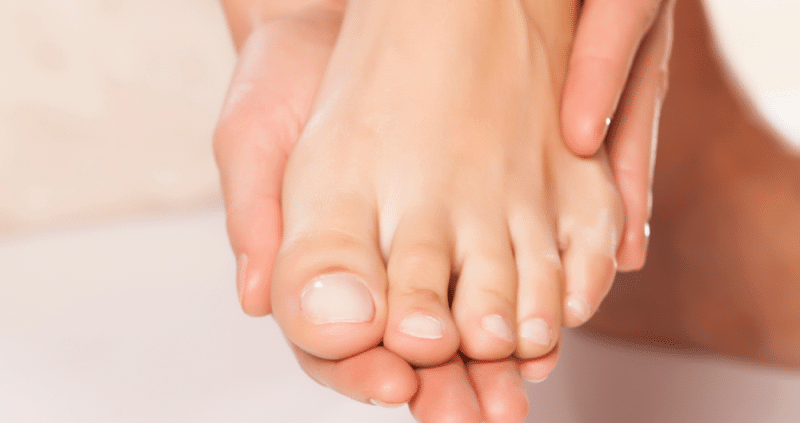An ingrown toenail develops when the nail edge digs into the skin. It results in inflammation and redness. This is a common problem in adults. You know how painful it is if you ever had it.
Ingrown toenails are more common in adults than in children. Also, men are more vulnerable to ingrown toenails as compared to women. This condition is mostly found in the big toe.
However, any nail can develop into an ingrown nail. It can cause many complications. When a sharp edge of a toenail grows into the skin folds, it leads to pain and discomfort. The condition further worsens if the wound gets infected.
However, an ingrown toenail can easily be treated. You only need to have some oils or ingredients, and common stuff used in daily life.
People with diabetes must avoid all these home remedies. If you have any circulation problem, it may take longer to cure. Treating ingrown toenail is equally important as treating any other disorder. Otherwise, you may develop many complications in the future.
If you are concerned about an ingrown toenail, then you are at the right place. Discover 21 best home remedies to treat an ingrown toenail. The best part of using home remedies is that you need not spend much.
Even, some ingredients are already available in your kitchens. So, let’s check out the remedies now.
Table of Contents
What Is An Ingrown Toenail?

Onychocryptosis is commonly known as an ingrown toenail. It is a painful nail disorder that is common among people.
Basically, the nail grows directly into one or both the sides of the nail bed, cutting it. It is due to pressure from the skin that causes the nail to grow sideways.
It may be due to an improper trimming of nails. People wearing tight shoes for longer periods experience this disease more often. It somewhat looks like the nail digging into the nail bed.
No doubt, it needs treatment and proper care. If left untreated, the condition worsens. Sometimes, an ingrown toenail results in a discharge of yellow fluid. The extra tissue growing on your toenail may further worsen the condition.
Sometimes, the ingrown nail may break into your skin. It lets the bacteria enter the wound that increases the pain. Thus, it is necessary to treat this disease.
Home Remedies To Get Rid Of Ingrown Toenail
You cannot ignore the fact that ingrown toenails are painful. You must treat an ingrown toenail before any complications occur.
There are a number of home remedies to treat the ingrown toenails. Here I have discussed such home remedies that are simple and effective.
1. Soak In Warm Water
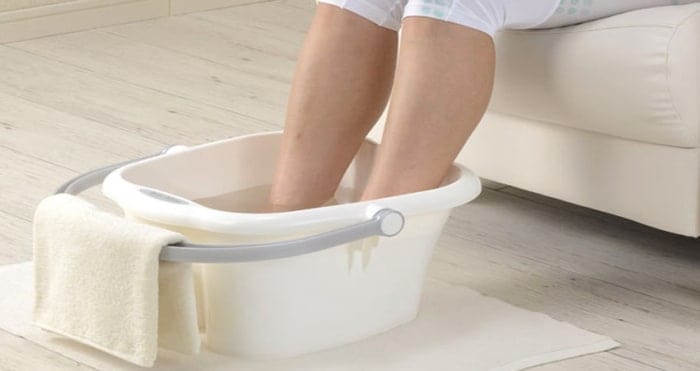
Lukewarm water is a good remedy to relieve pain. It will also prevent the spread of bacteria. Not only this, but it will also make your nails soft and smooth. This one is the cheapest and anyone can do it. It is a great and simple remedy to treat an ingrown toenail.
Things You Need
A tub filled with lukewarm water
Method
- Soak your feet in warm water for about 20 minutes.
- Rinse off your feet and pat with a towel.
Repeat this remedy once a day.
2. Cotton
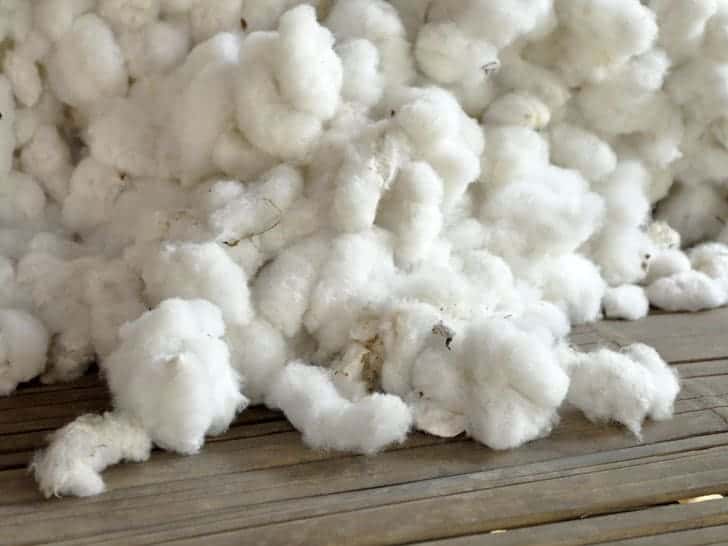
This is another very affordable and great remedy for an ingrown toenail. Basically, you need to stuff cotton between the ingrown nail and skin.
It becomes a barrier between the nail and skin. It allows the nail edge to grow away from the skin. Initially, you may feel some pain but it will get you good results later on.
Things You Need
Cotton
Method
- Roll moist cotton into a thick wick.
- Insert this between the toe skin and nail.
Do this for 10-12 days to heal your infected toenail.
3. Lemon
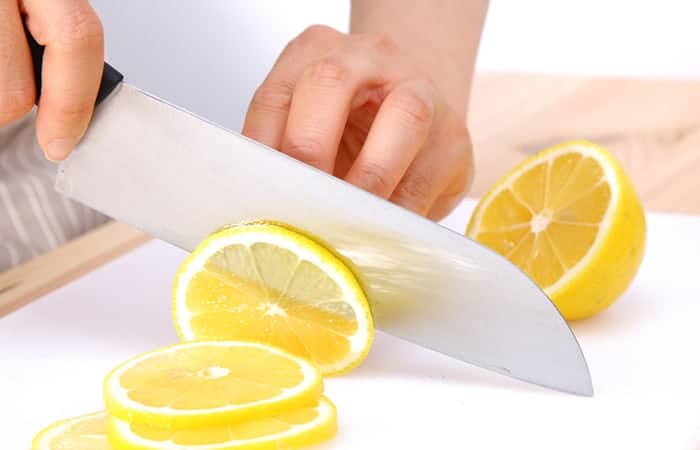
Lemon has antibacterial properties that help kill the bacteria. It is acidic in nature that promotes the healing process.
Things You Need
A slice of lemon
Method
- Tie a lemon slice with a help of bandage around your toe.
- Leave it overnight and rinse off in the morning.
Repeat this remedy once daily.
4. Potassium Permanganate
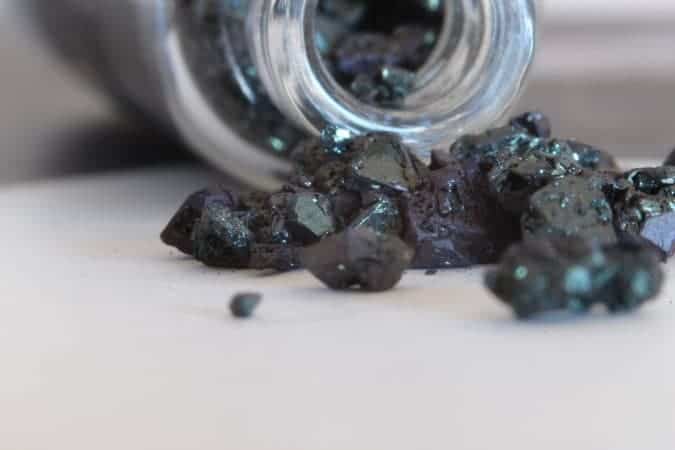
Potassium permanganate will help cleanse your toes. It acts as a disinfectant and kills the germs.
Things You Need
- Potassium permanganate
- A bucket of water
Method
- Add a very little amount of potassium permanganate in water.
- Soak your feet in it for at least 15-20 minutes.
Note– It can make your feet look brownish but that is normal. It will keep them germ-free.
5. Epsom Salt
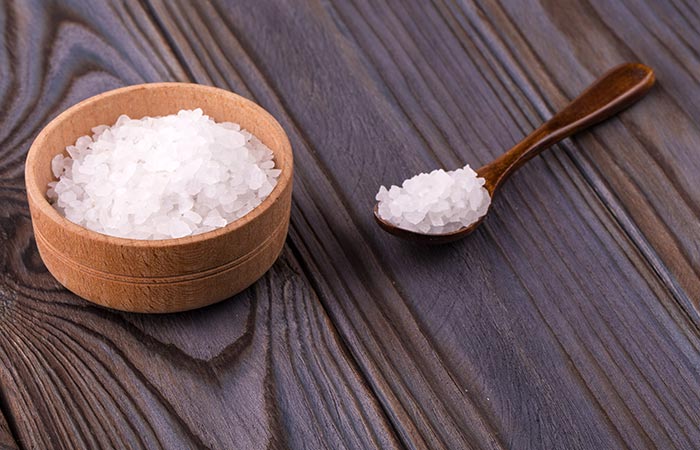
Epsom salt is an excellent remedy for soft feet. Its scientific name is Magnesium sulfate. Epsom salt has a number of uses. Epsom salt will make your skin around the nail softer. It gets easy for you to cut your toenail.
It also reduces the pressure on your nails and helps relax your foot muscles. It also helps reduce inflammation. This is a great remedy to try out. This is the best way to fix an ingrown toenail painlessly.
Things You Need
- 1 teaspoon Epsom salt
- A bucket full of water
Method
- Add Epsom salt in a bucket full of water.
- Soak your feet in it for about 20 minutes.
- Rinse off your feet and gently pat dry your feet.
Repeat this remedy 3-4 times a week.
6. Hydrogen Peroxide
Hydrogen peroxide is one of the best remedies to treat an ingrown toenail. Hydrogen peroxide is a very strong disinfectant.
It makes your skin soft and it gets easy for you to cut the nail. Hydrogen peroxide has antiseptic properties that can relieve pain. This home remedy will prevent the further infection in the toenail.
Things You Need
- Half a cup of hydrogen peroxide
- A bucket filled with water
Method
- Add hydrogen peroxide in a bucket full of water.
- Soak your feet in it for about half an hour.
- Rinse it off and pat dry gently.
Repeat this home remedy once daily.
Alternatively
You can also apply hydrogen peroxide directly to the affected area. Dilute hydrogen peroxide and use a cotton ball for application.
Caution
Some doctors suggest avoiding direct application of undiluted hydrogen peroxide. It is because it may rupture the healthy tissues of your skin.
7. Vicks Vaporub
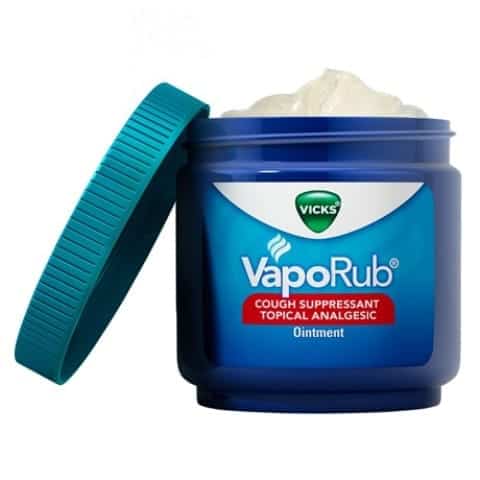
Vicks Vaporub is a common ointment to treat a cough. However, it can also help you heal ingrown toenail. Yes, this may be surprising to you but it is true.
Vicks Vaporub will speed up the recovery process and relieve the chronic pain. It will also moisturize your nails and make them softer.
Things You Need
Vicks Vaporub
Method
- Apply this ointment to your infected toenail.
- Rub it gently for few seconds.
- Leave it overnight.
Repeat this daily before bedtime.
8. Apple Cider Vinegar

Apple cider vinegar is mostly used in cooking. However, it has many other health benefits. apple cider vinegar is considered an infallible treatment for several disorders. It is an excellent home remedy to treat skin-related infections.
It has anti-inflammatory properties that help treat an ingrown toenail. It is acidic in nature that helps prevent infection. You can either apply it or ingest it. You can even take it with honey if you prefer a better taste.
Things You Need
- A bucket filled with water
- 1 tablespoon of apple cider vinegar
Method
- Mix one tablespoon of vinegar in water.
- Soak your feet in this for about 15-20 minutes.
- Rinse it off with normal water and pat dry.
- Repeat this remedy daily once.
You can also use a cotton ball for this home remedy. Dip a cotton ball in apple cider vinegar and place it on the affected area. Remember to cover it with a bandage for few hours and then remove it.
Alternatively
- Mix one tablespoon of vinegar into a glass of water.
- Consume it once a day.
- It is a little bit difficult as you may not like the taste of this solution. You can add honey for a better taste.
9. Alcohol
You need not have 4 shots of alcohol to treat your ingrown toenail. Alcohol is a great remedy for your infected toenail. You only need to apply it to the affected area. It will make your nails softer and smoother.
Things You Need
- Cotton
- Alcohol
Method
- Dip a cotton ball in alcohol.
- Press this cotton over your affected area and apply it gently.
- Let it sit for about 10 minutes and then rinse it off.
Repeat this remedy 3-4 times a week.
10. Camphor
Camphor is another great chemical compound to treat an ingrown toenail. It is basically used for its amazing aroma. However, camphor can also reduce pain associated with an ingrown toenail.
Things You Need
- ½ teaspoon melted camphor
- ½ teaspoon coconut oil or cinnamon oil
Method
- Mix the melted camphor with coconut oil.
- Apply it and leave it overnight.
- Rinse off in the morning.
Repeat this home remedy daily before going to bed.
11. Onion

Onion is an excellent home remedy to treat an ingrown nail. It inhibits the bacterial growth and thus cures the infection.
Things You Need
An onion
Method
- Cut an onion in half and rub it over the affected area.
- Leave it for about 10-15 minutes and then rinse off.
Repeat this remedy 3-4 times a week.
12. Turmeric

Turmeric is a common ingredient in many Indian dishes such as curry. However, it is of medicinal value and has a number of health benefits.
It acts as an antiseptic that kills the pathogens. It also inhibits the bacterial growth and prevents further infection.
Curcumin is present in turmeric that has antiseptic and anti-pain relieving ability. Turmeric is a great home remedy to cure an ingrown toenail. It will help cure the ingrown toenail faster.
Things You Need
- ½ teaspoon turmeric powder
- ½ teaspoon mustard oil
Method
- Mix both the ingredients together to make a thick paste.
- Apply this paste to your infected area.
- Cover it with a bandage.
- Leave it for about half an hour.
- Rinse it off and pat dry with a clean towel.
Repeat this remedy 3 times a week.
Alternatively
You can apply an antibiotic ointment containing curcumin. Bandage the toe after applying the cream. Do it 2-3 times a day every day.
Else, you can drink turmeric milk. Actually, it is a better idea to consume it. Mix one teaspoon of turmeric powder in a glass of milk.
You can also add honey to it. Drink it two times a day every day. It speeds up the recovery process and reduces the inflammation.
13. Ginger

Ginger is another great remedy on this list. It helps relieve pain and irritation. It is easily available in one’s kitchen. This is an affordable and cost-effective home remedy to get rid of ingrown toenail.
Things You Need
- ½ teaspoon ginger root oil
- ¼ teaspoon sesame oil
Method
- Mix the two ingredients together to make a mixture.
- Apply this mixture to the affected area.
- Leave it for 2-3 hours and rinse off with water.
Repeat this remedy once daily.
14. Tea Tree Oil
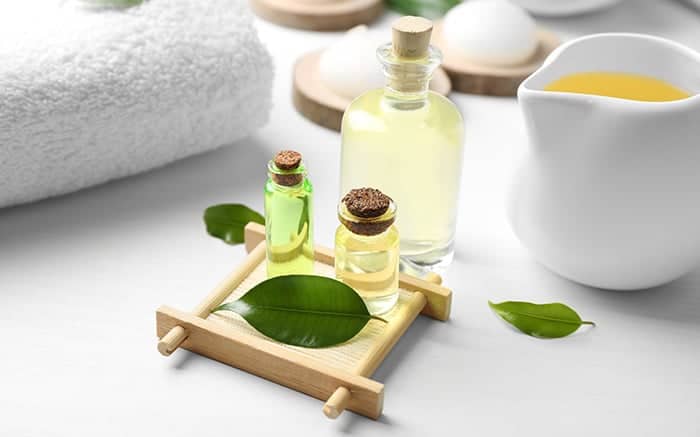
Tea tree oil acts as a natural disinfectant that kills the germs. Not only disinfectant, but it is a good moisturizer. Tea tree oil helps you get relief from pain. For people who don’t have much time, this one is perfect. It is one of the simplest remedies you can do.
Things You Need
- 2-3 drops of teaspoon tea tree oil
- 2-3 drops of olive oil or coconut oil
Method
- Mix these two oils together.
- Apply the mixture to the infected area.
- Rub it gently.
- Cover it with a bandage.
Do this 3-4 times a day every day.
15. White Flower Oil
White flower oil is basically a combination of 2-3 oils. It is a traditional Chinese oil that has medicinal values.
It is prepared from peppermint oil, eucalyptus oil, and lavender oil. All these three oils are herbal oils with medicinal value. This combination works wonders to treat an ingrown toenail.
Things You Need
2-3 drops of White flower oil
Method
- Dip your fingers in this oil.
- Massage with it for a few minutes.
- Leave it for a few hours.
Do this 3-4 times a day every day.
Note
It is toxic in nature. So, avoid ingesting it and keep it away from your mouth, eyes, and nose.
Apply it nearby area of the wound instead of applying it to the wound.
16. Indian Lilac
Indian lilac is commonly known as neem. It has anti-inflammatory properties that help reduce swelling. It also helps to alleviate pain as it has pain-suppressing properties.
Additionally, it helps reduce the future chances of infection. It has many health benefits and is commonly used by people to cure skin-related diseases.
Things You Need
- A handful of neem leaves
- 4 cups of water
Method
- Boil the leaves in four cups of water.
- Strain it and let it cool.
- Soak your feet in it for about 10-15 minutes.
- Rinse off your feet and dry the area thoroughly.
Repeat this remedy daily once a day.
Also, apply neem oil to the affected area before bedtime. Leave it overnight and rinse off in the morning. Do this daily once before going to bed.
17. Aloe Vera
Aloe Vera always comes to our minds when we think of skin-related ailments. It is a magical remedy for hair, skin, and beauty.
However, it has a number of health benefits including treatment for many disorders. Aloe Vera helps relieve pain and kills the bacteria. It helps fix the ingrown toenail.
Things You Need
1 Aloe Vera leaf
Method
- Extract Aloe Vera gel from the leaf.
- Apply it to the affected area and leave it overnight.
Repeat this remedy daily before going to bed.
You can also buy Aloe Vera gel from the market. However, it is better if you take it fresh from leaves.
18. Oregano Essential Oil

It is an antibacterial oil that kills the bacteria. It also works as an antiseptic and palliative agent that reduces pain. Applying oil to the infected area is easier as compared to other remedies.
Things You Need
- 3-4 drops of oregano essential oil
- 2-3 drops of olive oil
Method
- Mix both the oils together.
- Apply the mixture to the infected area and leave it for few hours.
- Apply these oils at least 3 times a day every day.
Alternatively
You can add 2-3 drops of this oil in water and consume it. Else, just put 2-3 drops of this oil under your tongue. However, direct ingestion is not safe for children.
CAUTION
- Avoid using this oil if you are pregnant.
- Do not give it children under the age of five.
- Oregano essential oil may reduce the iron absorption. Thus, use this oil before or after two hours of taking an iron supplement.
- People allergic to marjoram, sage, thyme, mint, or basil must avoid this.
- Ingesting this oil may result in vomiting, skin irritations, or rashes. Thus, you must take it carefully and not too much.
19. Antibacterial Soaps
Antibacterial soaps kill the bacteria and prevent the further infection. It is an effective home remedy to fix the ingrown toenail.
Things You Need
- Antibacterial soap
- Antibacterial ointment
- A bandage
Method
- Mix one squirt of antibacterial soap in a tub filled with warm water.
- Soak your foot in this soap solution for about 10 minutes.
- Pat dry your foot properly and place a piece of cotton under the ingrown toenail.
- Apply an antibacterial ointment and cover it with a bandage.
- Leave it for a few hours.
Repeat this remedy once daily.
20. Have A Proper Diet
People who consume too much sugar are vulnerable to an ingrown toenail. Thus, try to cut on sugary stuff to treat ingrown toenail faster.
Sugar weakens the cuticle of your toe and thus promotes the development of ingrown toenail. It is recommended to maintain a low-sugar diet while treating an ingrown toenail.
21. Trim Properly
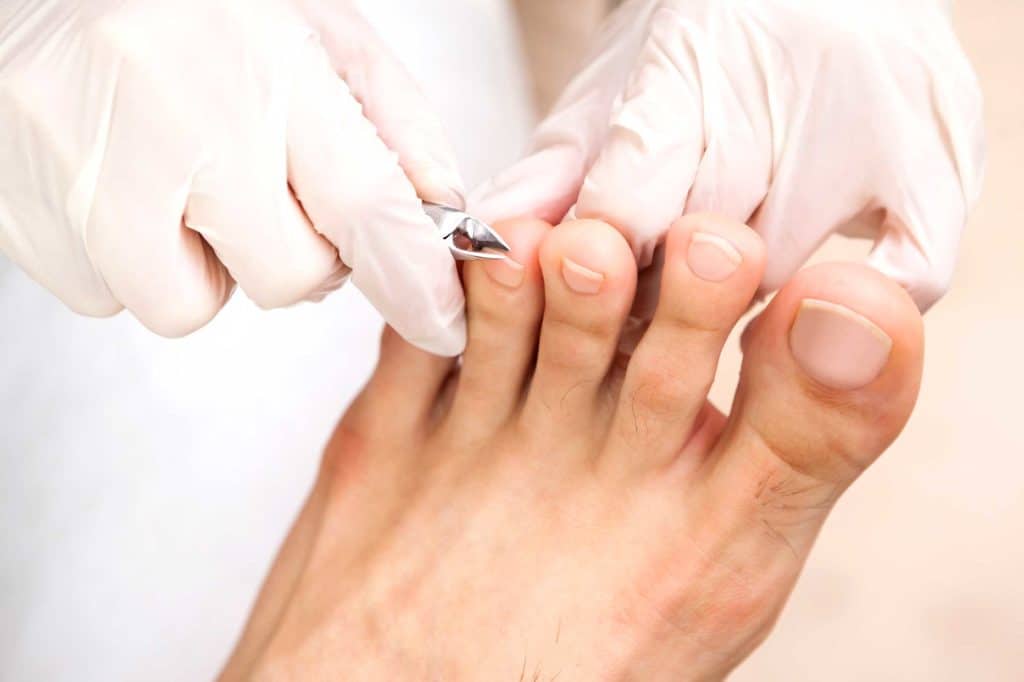
Trim your nails properly. Make sure your tools are sanitized. Cut your nails straight across. Don’t cut your toenails too short; it will prevent them from growing inside. Avoid giving your toenails a curved shape to match your toe shape.
Also, while trimming, start with the edges and not the middle portion. If your toenails are sharp, you can file them down a bit. But be very careful while trimming your toenails.
It is crucial to trim the nails to get rid of any sharp edges. Using a good quality nail clipper is also much important.
Don’t cut your toenails too short; it will prevent them from growing inside. Keep them at a moderate length to prevent them from digging into the skin.
While you are standing, your whole weight puts pressure on your feet. It lifts the skin above the toenails. Too short toenails may dig into your skin as they grow. That is why don’t trim your nails too short.
CAUTION
People with diabetes or poor circulation may not be able to trim properly. Therefore, you should take someone’s help if such is the condition with you.
How To Prevent Ingrown Toenail?
1. Keep your feet clean. For this, wash with soap solution 3-4 times a day. You should focus on maintaining foot hygiene. It will prevent further infection. Use a pumice stone or foot scrub on a regular basis. It will help prevent the accumulation of hard and dead skin.
2. Try to avoid tight fitting shoes whenever possible. Instead, wear comfortable footwear to avoid pain. If your shoes are tight or uncomfortable, then you should switch them. Wear open-toed shoes to provide the affected part to breathe. Your toenails also need to breathe in order to heal quickly.
3. Open-air footwear is great for healing ingrown toenails. However, it is not suited for all the terrains. Wearing open-toed sandals in the city makes your toe more vulnerable to infection.
Also, your open toe is more vulnerable to bumps and cuts on an uneven ground. Pollution is another factor that may lead to infection in the injured toe. That is why it is suggested to wear closed toes footwear for urban or cross-country excursions.
4. Trim your nails properly. Make sure your tools are sanitized. Cut your nails straight across. Don’t cut your toenails too short; it will prevent them from growing inside.
It is generally suggested not to trim the nail too short. People with diabetes should not cut their nails on their own. Take help of someone else and take care while trimming the nail.
5. Have a balanced and nutritional diet. Include more protein-rich foods, vegetables and fruits in your diet. Avoid too much sugar and sugary stuff.
6. Always keep your feet moisturized and use a good quality moisturizing agent. It will keep the area soft and soother. It gets easy for you to cut the ingrown toenail.
7. Rub any antibiotic cream on the infected area. It will kill the bacteria and inhibit their growth. Thus, it prevents the spread of infection.
8. Avoid having a pedicure if you have an ingrown toenail. However, if you have a pedicure, make sure that metallic instruments are not being used. Pumice stones are okay to use for removing dead skin. Also, ensure that they are only using the sterilized tools.
9. You should avoid wearing colorful socks. It is because the dyes used in hosiery may worsen the condition. The dyes can run and leak into the wound. It can cause further complications.It mostly affects people allergic or sensitive to dyes. Inculcate a habit of wearing light colored socks. It is better to wear white colored socks when the nail has cut into the skin.
10. Check your feet for any warning signs. You should look for signs of other problems. The condition of your feet may be a symptom of another disorder. For example- diabetic patients are at a risk of developing foot complications. These can include calluses, ulcers, and the loss of feeling.
Similarly, dry and flaky feet can be an indication of a thyroid problem. Thus, you should check for other signs along with the ingrown toenail.
Causes Of Ingrown Toenail
1. Heredity
Heredity is the rarely seen factor causing an ingrown toenail. An offspring may inherit the tendency to develop ingrown toenails from parents.
You may develop an ingrown toenail if any of your family members have this problem. It is seen that some people have more rounded nails. It increases the chance of developing ingrown nails.
2. Uncomfortable Footwear
Wearing tight or ill-fitting shoes are a reason for painful ingrown toenails. Wearing high heels for long hours can contribute to ingrown toenails. People whose occupation demands wearing high heels often develop ingrown toenails.
Also, adolescents are at greater risk of developing ingrown toenails. Teenage is the time of physical and sexual changes in one’s body.
In adolescents, there is a sudden growth spurt. Thus, they may outgrow their footwear quickly. But end up wearing them for a while before having a new pair of shoes.
3. Toenail Trauma
An injury or toenail trauma can be the reason for ingrown toenails. Activities that put pressure on your toenails can cause ingrown toenails.
For example- if you drop something on your toe, it puts pressure on your toenails. It may result in ingrown toenails to develop.
4. Improper Trimming
This is one of the most common causes of ingrown toenails. Cutting toenails too short will promote the skin at the corners of the nail to fold over it. Thus, you should avoid cutting your nails too short.
5. Pedicures
It is the new trend in the market. Getting a manicure or pedicure is something we all enjoy. Not only women, but men are too enjoying pedicures nowadays. It is really good if you to get your pedicure done.
However, always go to an experienced nail technician. It is because pedicures can also cause an ingrown toenail. Sometimes, the nail technician gets aggressive in cutting back the nails. it can result in ingrown toenails.
6. Fungal Or Bacterial Infections
Infections can also cause ingrown toenails. Infections can cause a thickened toenail to develop. Several bacterial and fungal infections are the causes of ingrown toenails. Poor exposure to sunlight can lead to such infections.
Other conditions that can cause ingrown toenails are as follows:
- Excessive sweating in feet
- Diabetes
- Arthritis
- Numbness in the toes
- Vascular problems
- Abnormally shaped nail beds
- Nail malformations that are a result of several diseases
- Being obese
- Poor exposure to sunlight
Complications Of Ingrown Toenails
The condition of your feet can tell you about your health issues. They reflect your overall health and sometimes may be an indication of serious disorders. Your fingernails are a sign of your health.
Similarly, pain in feet can be a sign of a particular disorder. If left untreated, ingrown toenails can cause several complications. Infected ingrown toenails can cause cellulitis. Septicemia can also develop as a result of the untreated ingrown toenail.
Usually, it is common in people having diabetes or AIDS. People with weaker immune response are more vulnerable to such complications. Additionally, pain associated with ingrown toenails may result in injury to other joints.
Symptoms Of Ingrown Toenail
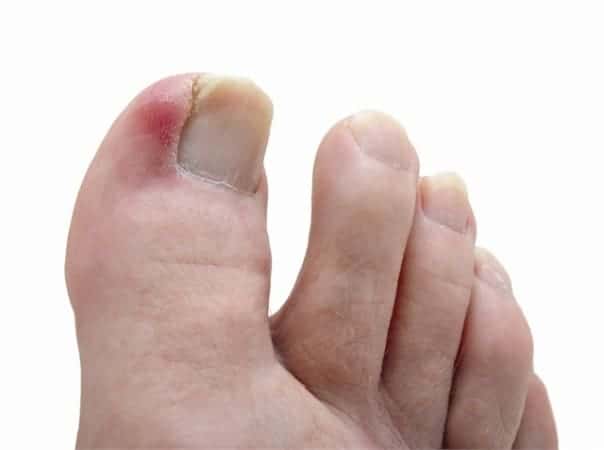
An ingrown toenail is a common disorder. There are noticeable signs and symptoms. Most often it affects your big toe.
However, any nail can become ingrown as discussed above. You can easily observe the signs of an ingrown toenail.
Following are the symptoms of an ingrown toenail:
1. Redness And Swelling
In the early stage, the affected toe becomes reddish and painful. You may also notice mild swelling. But there will be no discharge of pus in the starting.
2. Yellowish Drainage
Later on, a yellowish discharge may occur. If left untreated, the extra skin grows around the sharp edges of the nail.
It is basically your body’s response to the trauma of an irritating nail. However, this is not an infection. But, this is the time you cannot avoid this problem.
3. Discharge Of Pus
An infection may develop in the affected toenail. The infection worsens the condition. You may now notice a discharge of yellow colored drainage i.e. pus from the area.
Redness and swelling increase around the area. You may also develop fever, although it happens in rare cases.
Here I have summed up the signs and symptoms of ingrown toenails:
- Pain in the nail beds
- Pain while wearing footwear
- Redness and swelling
- Discharge of yellowish fluid i.e. pus
- Fever in rare cases
- Water discharge with some traces of blood
Cover Tools That Can Be Used
a. A Toe Protector
Use a toe protector to treat the ingrown nails. The term protector indicates that it would be something that covers the toe.
Basically, a toe protector fits around the affected area and covers it completely. It behaves as a barrier for ingrown nails. You should use a good brand toe protector.
Branded toe protector comes with a medicated gel. This gel softens your nails for easier trimming. However, you should be doing it properly with the accurate procedure.
b. A Toe Brace
Toe braces are made up of thin and adhesive materials. These composite thread-like materials are glued to your toe. The toe braces protect your skin from sharp and ingrown toenail.
These toe braces lift the nail edges as they grow. It helps prevent the development of ingrown toenails. You can find the toe braces online or in pharmaceutical stores.
How To Take Care If Removing It Using Tool?
You should avoid cutting your ingrown toenail to the extent you can. However, if you want to cut follow the proper procedure. A systematic method of removing ingrown toenails is necessary to prevent infection.
Tools Required
- A pair of tweezers
- A nail cutter
- Filer
- A small scissor
- Disinfectant
Method
1. Clean The Area
The skin around the ingrown toenail is often tight and hard. It is often inflamed and irritated. This makes your nail vulnerable to further infections.
Use an antibacterial soap for the cleansing procedure. Even washing hands before cleaning is a good idea. Keep your toenails clean as much as you can.
However, if you notice pus or sharp pain, avoid treating it.
2. Soak Your Toenail
Soak your feet in warm water for a few minutes. It will help soften the skin and reduce swelling. This makes it easier for you to remove the ingrown toenail. Add some Epsom salt in warm water. Soak your feet in it before removing the ingrown toenail.
3. Sanitizing The Tools
Cleaning the tools is also important prior to remove the ingrown toenail. Sanitize whatever equipment you are using.
For this, follow the given procedure:
a) Wash your tools with warm water and antibacterial soap. Rinse them off under running water and then pat dry with a clean cloth.
b) You can use alcohol for sanitizing your tools. Soak your tools in alcohol for just 4-5 minutes.
c) Don’t use a tool if it falls anywhere dirty. It is better you use a new pair of tweezers than taking a risk.
4. Clip The Nail
In minor cases, it is easy to clip the nails. Use a small pair of nail clippers to clip the ingrown toenail. Ensure to cut your nail into a curved or an oval shape. The square shaped nails are easily breakable.
Trimming the ingrown nail is not so effective. That is why; you should cut it in a curved shape. The curved shape nails are stronger than any other shape.
Once the nail grows out, cut it straight across. It will prevent the reoccurrence of this condition.
5. Place Cotton Or Dental Floss
This is another option to remove an ingrown nail. Basically, you have to separate the nail from the skin and let it grow out of the ingrown shape.
For this, take clean and sterile cotton. Slip the cotton under the ingrown edge of your nail. The cotton acts as a barrier to prevent the inward growth of the nail.
Remember to replace cotton every night before bedtime. You can also use dental floss instead of cotton. The cotton of dental floss will make your toenail grow out of the ingrown portion.
6. Again, Clean The Nail
After removing the ingrown toenail, clean your nails again. Whatever method you used, clean your nails. Apply an antibiotic ointment after removing an ingrown toenail. You can get an antibiotic ointment from a local drug store.
Note- Don’t cut your ingrown toenail by yourself if you have diabetes. Also, people with poor circulation problems must avoid doing this.
When To See Your Doctor?
An ingrown toenail can be treated at home. However, it may cause some serious consequences in some cases. See your doctor if you have diabetes or poor immune system.
You Must Also See Your Doctor If
- You experience severe pain and swelling.
- Home remedies have not worked for you even after three days of application.
- You have an allergic reaction to any home remedy.
- You need a proper guidance on care for ingrown toenails.
- You are on chemotherapy.
If You Have The Following Disorders
- Diabetes
- AIDS
- Poor circulation problems
- You have a reason for increased risk of infection or poor wound healing.
Final Word
So, these were some effective remedies that you can do at your home. Your feet are a part of your body. They need proper care just like your hands.
An ingrown toenail is painful, annoying and persistent. It is better to see a podiatrist if you have an infected ingrown toenail.
However, minor cases can be treated at home itself with natural remedies. Proper trimming and hygiene are crucial to prevent this condition.
Not only hygiene, but a proper diet is equally important. However, if you still suffer from pain and inflammation, see your doctor.
Also, Read:
Effective Remedies To Whiten Yellow And Stained Nails Instantly
How To Get Rid Of Bruised Toenail Fast
What Is Cuticle Oil? How To Make It?
Home Remedies To Get Rid Of Hangnails
What Is Spoon Shaped Nails? How To Get Rid Of Them Naturally

